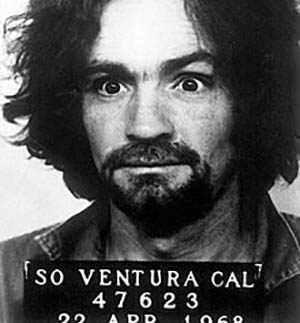by Janna Wong
As the headline on the book cover of Helter Skelter: The True Story of The Manson Murders by Vincent Bugliosi with Curt Gentry clearly states, this is “The #1 True Crime Bestseller of All Time.” If you love the True Crime genre and have not yet read this book, go for it…now!
But first, some background information to whet your appetite.
The Summer of 1969
Two summers before 1969, fondly known as The Summer of Love, the hippie generation blossomed spectacularly, concentrating in the Haight-Ashbury section of San Francisco. Propelled by America’s participation in the Vietnam War, the anti-war movement took hold among the country’s youth. In major cities across the United States, young kids “dropped out” of society with the help of marijuana, hallucinogenic drugs like LSD, and music by the likes of Janis Joplin and Big Brother and the Holding Company, Jimi Hendrix, Jefferson Airplane, Buffalo Springfield, and anti-war protestors such as Joan Baez and Bob Dylan. It was a time of great cultural change in America as kids of all ages found their voices and spoke up as a demographic for the first time in U.S. history, declaring that we should Make Love Not War,
Two summers later, Los Angelinos were still basking in the glow of 1967 when they were rudely awakened to the potential horrors of the once carefree and free-flowing hippie lifestyle.
On August 10, 1969, when you opened the Sunday edition of the Los Angeles Times, you’d see such typical news stories on the front page as: President Nixon setting up the Western White House in San Clemente; California lawmakers adjourning without resolving tax reform; the city’s schools facing yet another major deficit; welfare reform being needed; air controllers comprising an elite fraternity. But I’m guessing that few readers looked at those articles when the paper’s headline shouted, “Sharon Tate, Four Others Murdered.” And above the headline, “Ritualistic Slayings.”
I was away from home that weekend and became extremely concerned. My family home was less than 2 miles away from 10050 Cielo Drive, near the top of Benedict Canyon in Beverly Hills, where Sharon Tate lived with her husband Roman Polanski (who was in Europe directing The Day of the Dolphin). It was later rumored that girls attending a summer camp at the tony private school near the base of Benedict Canyon Drive could hear the screams coming from the Tate/Polanski home when Sharon and her houseguests were being slaughtered.
The city went into a panic as detectives from the Los Angeles Police Department worked ceaselessly to uncover the murderers and, importantly, to learn the reason why the murders happened in the first place. It wasn’t long before the detectives homed in on the criminals: members of The Manson Family.
The Manson Family Murders
Charles Manson was a ne’er-do-well who spent more than half of his life in prisons. He gained notoriety in the 1960s when he began creating and populating his cult group, “The Manson Family.” While he often did not participate in the crimes, his “family” did his bidding, committing petty crimes and misdemeanors…until they got word from Manson to kill. And so, they did.
On the night of August 8, 1969, and at Manson’s direction, Manson Family members broke into the property formerly owned by Terry Melcher (Doris Day’s son) and was currently being rented by Tate and Polanski. At his direction, members of his family proceeded to kill Sharon (expecting her first child) and her houseguests Jay Sebring, Abigail Folger, Wojtek Frykowski, and the property’s caretaker Steven Parent.
Murdering six people in cold blood was not enough for Manson; he ordered his family to kill again the next night. They crossed the city, traveling east to Los Feliz, and while Manson stayed in the car, his family members killed Rosemary and Leno LaBianca (in an apparent random choice by Manson).
According to Vincent Bugliosi, the case’s prosecuting attorney (and author of this book), Manson’s introduction to music of the Beatles, and especially the group’s White Album, was a significant moment in Manson’s life as he was a struggling musician and claimed to hear messages about racial tensions in their songs, particularly “Helter Skelter.”
On December 1, 1969, Charles Manson and key members of his family were arrested for the Tate-LaBianca murders. Their trial began in June 1970, and with the testimony of Manson family member Linda Kasabian (who received immunity for her testimony), all were found guilty on January 25, 1971, receiving the death penalty (which was automatically reduced to life in prison due to California’s no-death penalty rule). Charles Manson died in prison on November 19, 2017.
Why You Should Read Bugliosi’s Book
Aside from the fact that it is “The #1 True Crime Bestseller of All Time,” Bugliosi’s book is a focused and engrossing read, prompted by the authors’ incredible attention to details. The book, first published in 1974, is divided into eight parts:
- The Murders
- The Killers
- The Investigation – Phase Two
- The Search for the Motive
- “Don’t You Know Who You’re Crucifying?”
- The Trial
- Murder in the Wind
- Fires in Your Cities
A later edition of the book adds an Afterword by Bugliosi dated June 1994.
In Helter Skelter, Bugliosi offers detailed information about every aspect of the crimes, investigation, arrests, and trial. For example, he gives us a complete picture of Charles Manson, beginning as a child delinquent and how he came to lead (arguably) the world’s most notorious crime family. We learn how he took advantage of the kindness of others by camping out at homes or ranches as a freeloader while populating and lording over once-innocent strays in need of a strong voice, controlling them and telling them how to live.
Those who find Bugliosi’s written description of the murders too grisly and gruesome (and, believe me, Bugliosi spares no details in describing the scenes the police walked into and there are plenty of photographs to support his descriptions), don’t fret. Bugliosi’s explanation of the police investigation, arrests, and trial are just as engrossing (but mostly without the gore). In 1969, investigations were conducted quite differently (i.e., DNA technology had yet to be created so detectives relied on paper-sized posters sent around LAPD offices and phone calls). There were no fax machines, emails, cell phones, or social media, thus creating a serious lack of assistance from other police precincts. The detectives were working hard to uncover the criminals and Bugliosi’s detailed description of the investigation illustrates this.
For me, one of the most engaging parts of the book came when the trial of the Manson Family members began. As the Los Angeles County Deputy District Attorney, Bugliosi was knowledgeable about the processes required to get criminals to trial and was an expert is earning convictions, winning 105 out of 106 felony trials that he prosecuted. Importantly – and ground-breakingly so – is the fact that Bugliosi managed to earn successful murder verdicts for Charles Manson, who was not at the Tate murders and wasn’t present inside the house during the murders of the LaBiancas. This was a first for a prosecutor and despite colleagues who told him he was wrong and was overreaching in his attempts to get murder convictions for Charles Manson, Bugliosi would not be deterred and he proved to be right.
Throughout every page of Helter Skelter, Bugliosi dispenses knowledge that only someone on the inside of the justice system would know. It’s fascinating, well-written, and, despite the horrific descriptions of the murder scenes, the book is a page-turner.
If you are new to the genre of True Crime, this book should be your first read. If you already love True Crime and perhaps read the book upon its publication, why not read it again? In either case, it’s worth the effort.
Have you read Helter Skelter? Did you like it/hate it? Do you think our society will ever see another criminal with the impact of Charles Manson?







